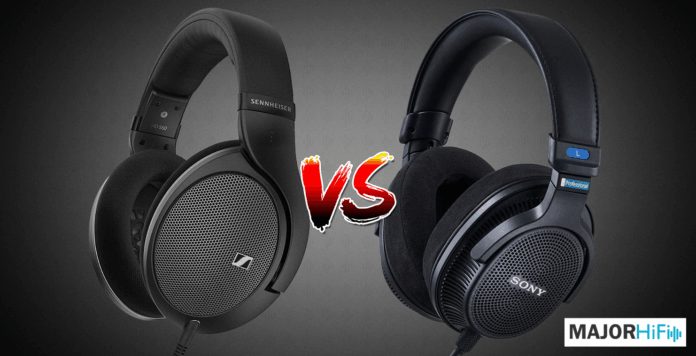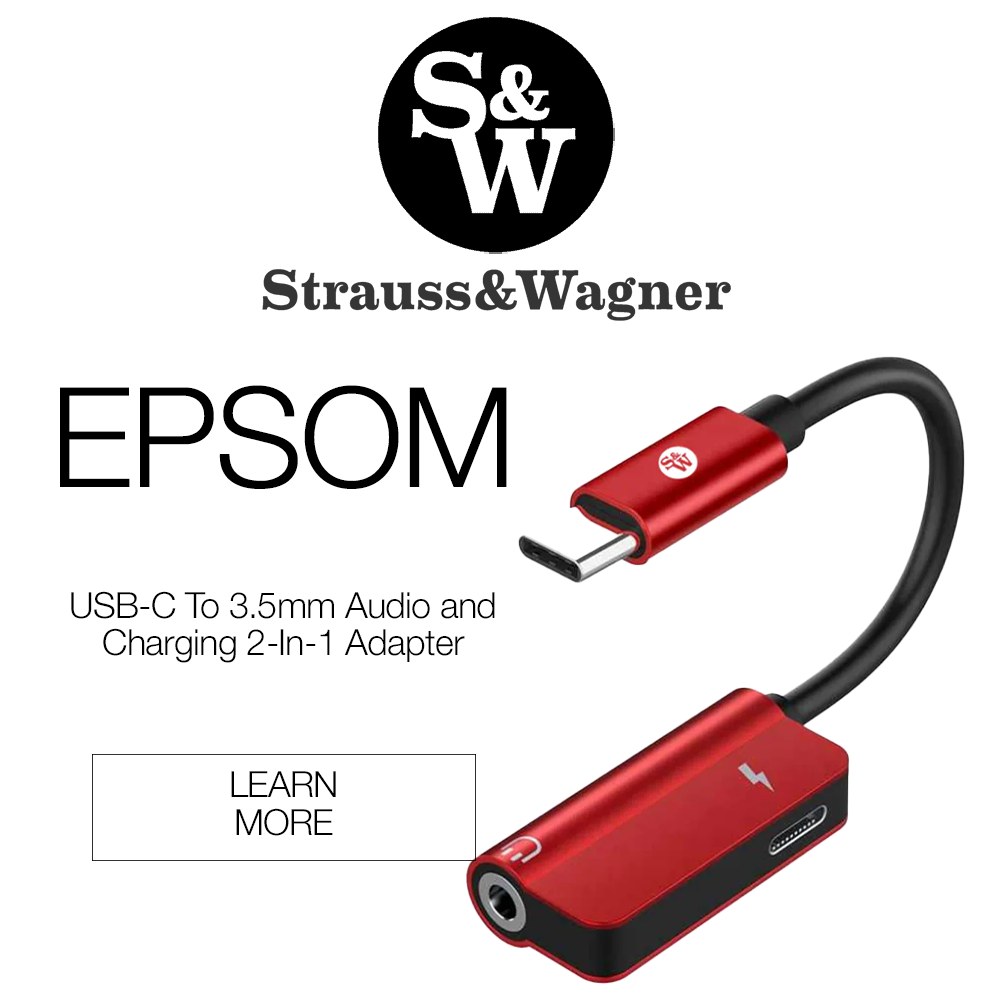When you’re looking for a professional-grade open-back headphone for mixing, mastering, or immersive critical listening, the Sony MDR-MV1 and the Sennheiser HD 550 both stand out. Each delivers comfort, precision, and exceptional sonic performance, but they take noticeably different approaches in design, tuning, and overall presentation. Here’s a detailed comparison to help you decide which model fits your workflow and listening style.
What You Get
| MDR-MV1 | HD 550 |
|
|
Look & Feel
Based on its appearance, the Sennheiser HD 550 might appear more refined compared to the MV1. The headphone design features metal mesh earcups, a redesigned headband, and plush, breathable ear cushions. While the MV1 may look like plastic parts, it’s actually thin aluminum, creating a frame that’s durable while remaining extremely light, ideal for extended studio sessions. Both headphones are comfortable, but they cater to different preferences. The Sony MDR-MV1 weighs just 223 grams, making it one of the lighter open-back headphones in its category. The breathable suede pads and moderate clamp pressure make it suitable for hours of mixing or editing, though listeners with larger ears might find the pads slightly tight. The Sennheiser HD 550, meanwhile, offers one of the most effortless fits on the market. Its ultra-light frame and minimal clamp pressure make it feel almost invisible on the head, even during marathon listening sessions.
Design
Both the Sony MDR-MV1 and Sennheiser HD 550 use dynamic drivers, but they have different impedances that should be taken into account. While the MV1 has a low resistance of 24 Ohms, the HD 550 is 150 Ohms. This means you can get away with powering the MV1 with almost anything with the right headphone outputs. You’ll need an amplifier for the HD 550, but nothing crazy. Any audio interface or budget amplifier should be able to give the HD 550 the juice it needs.
| Specification | Sony MDR-MV1 | Sennheiser HD 550 |
|---|---|---|
| Type | Open-back, over-ear | Open-back, over-ear |
| Driver Type | Dynamic | Dynamic |
| Driver Size | 40 mm | 42 mm |
| Frequency Response | 5 Hz – 80 kHz | 6 Hz – 39.5 kHz |
| Impedance | 24 Ω | 150 Ω |
| Sensitivity | 100 dB/mW | 104 dB SPL (1 kHz, 1 Vrms) |
| Weight | 223 g (without cable) | 260 g (without cable) |
| Cable | 2.5 m detachable, 3.5 mm TRS | 1.8 m detachable, 3.5 mm TRS |
| Connector | 3.5 mm with 6.35 mm adapter | 3.5 mm with screw-on 6.35 mm adapter |
Soundstage
Both the Sony MDR-MV1 and Sennheiser HD 550 deliver excellent spatial performance, but they approach it differently. The MDR-MV1 offers a focused, forward-leaning soundstage that excels in precision mixing. Imaging is remarkably accurate, allowing you to track panning moves and placement in a way that feels almost tactile, like you can reach into the mix and move elements around. This makes it a highly effective tool for engineers who demand surgical control over their stereo field.
The HD 550 delivers a more intimate but still highly detailed soundstage. While it doesn’t extend as wide as the Sony, it creates a holographic sense of depth, placing instruments and effects naturally around you. The imaging is smooth and cohesive, making it equally enjoyable for critical work and immersive listening. Sony’s presentation favors precision, whereas Sennheiser aims for a more relaxed yet still accurate sonic image.
Low End
In the low end, the Sony MDR-MV1 presents a punchy and articulate bass response, focusing on tight mid-bass with well-controlled sub-bass extension. The Sennheiser HD 550’s bass is slightly more understated but carries a natural, resonant quality.It delivers enough impact to give rhythm sections presence without adding unnecessary weight or masking other frequencies. This controlled approach makes it particularly useful in professional environments where low-end accuracy is essential. If you’re looking to hear more rumble in the sub-bass, you’ll prefer the HD 550’s subtle presence. It blends seamlessly with the rest of the frequency range, making it ideal for genres where bass should feel integrated rather than emphasized.
Mids
The Sony MDR-MV1 has a slightly forward midrange, giving vocals, guitars, and mid-centric instruments a crisp tonality. This tuning allows for excellent separation between elements in dense mixes, making it easy to hear layering and subtle details. It’s an analytical approach that benefits those who want every nuance brought forward. By contrast, the Sennheiser HD 550 takes a more neutral approach to the mids. Instruments and vocals sit naturally in the mix, without added coloration or emphasis. This balanced presentation preserves the integrity of the original recording, making the HD 550 a strong choice for engineers and listeners who value tonal accuracy.
Highs
In the high frequencies, the Sony MDR-MV1 is unapologetically revealing, while the Sennheiser HD 550 is more relaxed. Its bright treble brings out reverb tails, transient attacks, and micro-details with impressive clarity. However, there is a slight emphasis around the 12–14 kHz range that can introduce a bit of buzz or shimmer on certain tracks. This is easily managed with a subtle EQ adjustment if needed. The Sennheiser HD 550 maintains clarity and detail without becoming fatiguing, even during long listening sessions. The treble has a natural decay and airiness that make it suitable for a wide range of genres, especially those prone to harshness in the top end.
Summary
If your priority is precision detail retrieval, forward clarity, and surgical imaging for mixing and mastering, the Sony MDR-MV1 stands out as a lightweight, analytical tool that lets you hear every detail of your work. If you prefer a smoother, more natural tonal balance with unmatched long-term comfort, the Sennheiser HD 550 is the better option. Its neutral tuning and fatigue-free fit make it equally suitable for professional use and extended casual listening. Ultimately, your choice will depend on whether you value the bright, hyper-detailed presentation of the MDR-MV1 or the relaxed, balanced accuracy of the HD 550.
The Sony MDR-MV1 and Sennheiser HD 550 are available at Audio46.
MAJORHIFI may receive commissions from retail offers.








